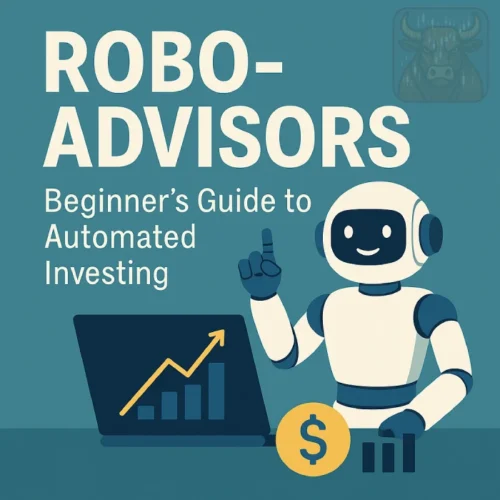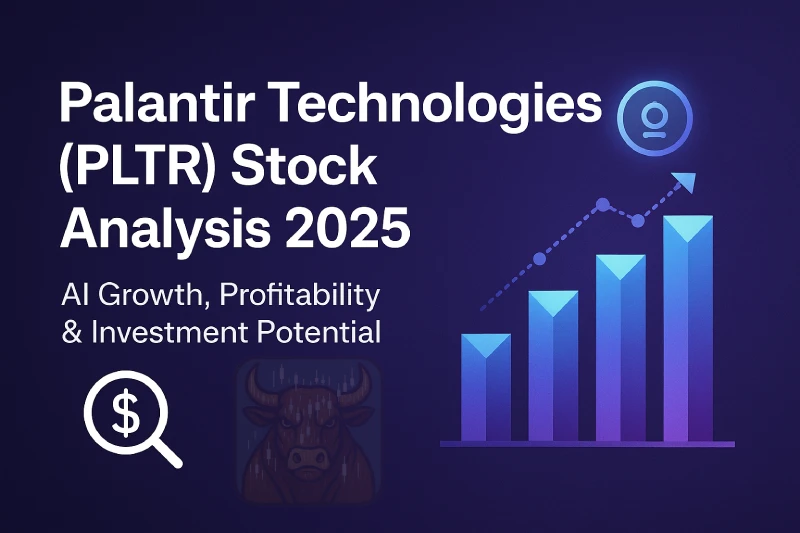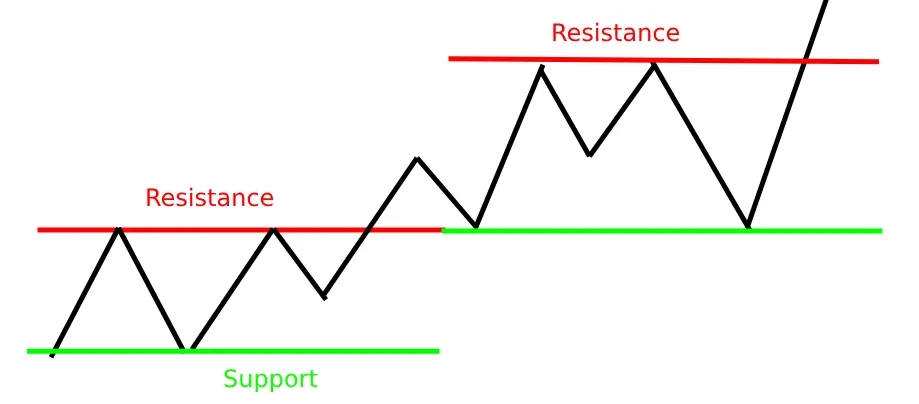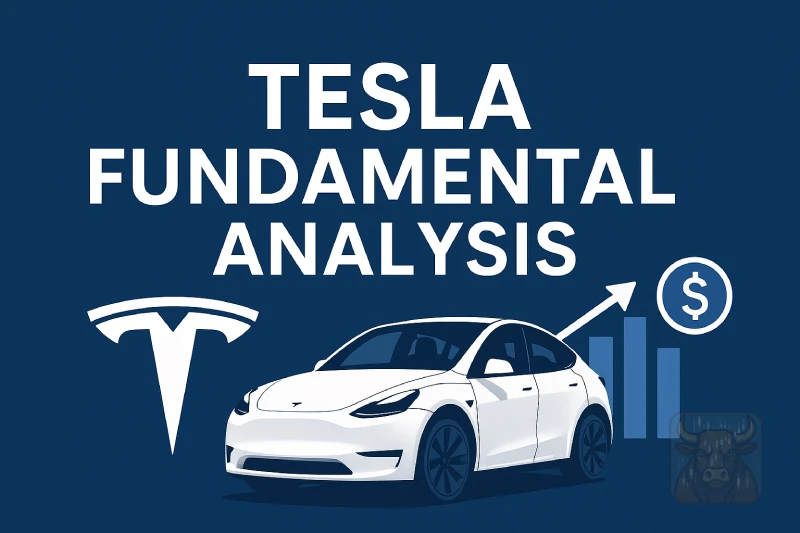🤖 Robo-Advisors: The Complete 2025 Beginner’s Guide to Automated Investing

Did you know robo-advisors now manage over $2.5 trillion in assets worldwide and are quickly becoming a top choice for beginner investors in 2025? These platforms use advanced algorithms and automation to create personalized portfolios, offering lower fees and higher efficiency compared to traditional financial advisors. With average fees as low as 0.25% and features like automatic rebalancing and tax-loss harvesting, robo-advisors make investing easier than ever—no need for complex market knowledge or high account minimums. In fact, many of the best robo-advisors in 2025 have outperformed human-managed portfolios, making them an attractive option for hands-off, cost-conscious investors.
In this comprehensive 2025 guide, you’ll discover:
✅ How robo-advisors actually work (no tech jargon)
✅ 2025’s top 5 robo-platforms compared
✅ The hidden fees most beginners miss
✅ When you should (and shouldn’t) use a robo-advisor
💡 What Are Robo-Advisors?
Robo-advisors are automated investment platforms that utilize advanced algorithms and artificial intelligence (AI) to create and manage diversified portfolios tailored to individual investors’ goals and risk tolerance. These platforms offer features such as automatic rebalancing, tax optimization, and low fees, typically ranging from 0.15% to 0.50% annually.
In 2025, robo-advisors have become a mainstream solution for both novice and seasoned investors, managing over $1.5 trillion in assets globally. Their user-friendly interfaces and low account minimums—often starting as low as $500—make them accessible to a broad audience.
🔍 Key Features of Robo-Advisors:
- AI-Driven Asset Allocation: Utilize AI and machine learning to optimize investment strategies based on real-time market data and individual investor profiles.
- Automatic Rebalancing: Continuously monitor and adjust portfolios to maintain the desired asset allocation, ensuring alignment with investment goals.
- Tax Optimization: Implement strategies like tax-loss harvesting to minimize tax liabilities and enhance after-tax returns.
- Goal-Based Planning: Allow investors to set specific financial goals (e.g., retirement, education) and tailor investment strategies accordingly.
- Low Fees: Offer cost-effective investment management, with fees significantly lower than traditional financial advisors.
- Accessibility: Provide easy-to-use platforms with low minimum investment requirements, democratizing access to professional investment management.
By combining technology with financial expertise, robo-advisors offer a convenient and efficient way to invest, making them an increasingly popular choice in the evolving financial landscape.
Why They Matter:
✔ Democratize investing ($500 minimums vs. $50K+ for human advisors)
✔ Remove emotional decisions (No panic selling)
✔ 24/7 portfolio monitoring
⚙️ How Robo-Advisors Work
Robo-advisors use sophisticated algorithms and AI-driven models to manage your investments with minimal human intervention. They are designed to simplify the investing process, especially for beginners, while offering strategies that are traditionally reserved for high-net-worth individuals.
🔄 The 5-Step Robo-Advisor Process:
- Investor Questionnaire
You answer a brief survey (5–10 minutes) about your financial goals, risk tolerance, time horizon, and income. This forms the basis of your personalized portfolio. - Portfolio Construction
Based on your profile, the robo-advisor builds a diversified portfolio—usually made up of low-cost ETFs (Exchange-Traded Funds) across asset classes like U.S. stocks, international stocks, bonds, and sometimes alternatives like crypto or REITs. - Automated Deposits & Investing
You can schedule recurring deposits. The robo-advisor automatically invests funds according to your target allocation. - Ongoing Rebalancing
As markets fluctuate, your portfolio may drift from the original allocation. Robo-advisors automatically rebalance, typically quarterly or when allocation thresholds are breached. - Tax-Loss Harvesting (optional)
Many robo-advisors offer this feature in taxable accounts, selling underperforming assets to offset capital gains and reduce your tax bill. This can add up to 0.5–1.0% in annual after-tax returns.
📊 Example (2020–2025):
An initial $10,000 investment with Betterment in early 2020, assuming average annualized returns of 9.2%, would be worth approximately $15,700 by 2025—outperforming many traditional advisors who charge 1%+ in fees.
💡 Did You Know?
Some robo-advisors now integrate ESG filters, crypto exposure, and personalized thematic investing into their algorithms—blending automation with customization.
🏆 Top 5 Robo-Advisors in 2025
| Platform | Fees | Minimum | Best For | 2024 Return* |
|---|---|---|---|---|
| Wealthfront | 0.25% | $500 | Hands-off investors | +11.6% |
| Betterment | 0.25% | $0 | Goal-based investing | +11.1% |
| Schwab Intelligent Portfolios | $0** | $5,000 | Schwab clients | +10.4% |
| Fidelity Go | 0.35% | $0 | Fidelity users | +10.6% |
| Vanguard Digital Advisor | 0.20%*** | $3,000 | Low-cost index fans | +10.2% |
💡 Pro Tip: Wealthfront and Betterment offer cash accounts with 4.5% APY, beating many high-yield savings accounts in 2025.
- Returns are based on model portfolios as reported in Q4 2024 and may vary.
- Schwab charges indirect fees via ETF expense ratios.
- Vanguard’s advisory fee lowered from 0.25% to 0.20% in late 2024.
💰 Robo-Advisor vs. Human Advisor (2025)
| Feature | Robo-Advisor | Human Advisor |
|---|---|---|
| Fees | 0.15%–0.50% | 1%–2% |
| Minimum | $0–$5K | $50K–$250K |
| Availability | 24/7 Online | By Appointment |
| Personalization | Moderate | High |
| Performance | ~80–85% track S&P 500 | ~50% underperform |
⚠️ When to Choose a Human Advisor:
- Portfolios over $1 million
- Complex estate planning
- Retirement distribution strategies
- Business succession
⚠️ 4 Robo-Advisor Risks in 2025
While robo-advisors offer convenience, low fees, and automation, they’re not perfect. Here are four key risks to consider before investing:
❌ Limited Personalization
Most robo-advisors build portfolios based on a preset algorithm. While this works for general goals like retirement or saving for a house, they often lack flexibility for unique needs like ESG investing, specific stock exposure, or advanced tax strategies.
❌ Over-Diversification
Some platforms allocate your funds across 10 or more ETFs—even when a simpler portfolio would suffice. This can lead to redundancy, higher costs, and diluted returns, especially for smaller portfolios under $10,000.
❌ Tax Inefficiencies in Non-Optimized Accounts
Not all robo-advisors offer advanced tax strategies like tax-loss harvesting or asset location. For taxable accounts, this can result in avoidable capital gains or lost opportunities for savings. Always check if tax features are enabled and appropriate for your situation.
❌ Tech and Automation Errors
Although rare, software glitches can cause incorrect allocations, double purchases, or delayed rebalancing. Always monitor your portfolio monthly and enable alerts to catch issues early. A “set it and forget it” mindset only works if you verify things run smoothly in the background.
📌 Bottom line: Robo-advisors are great for most investors—but not 100% foolproof. Stay informed, read platform updates, and understand the tradeoffs.
❓ Robo-Advisor FAQs (2025 Edition)
Yes, most robo-advisors are backed by well-established brokerages and operate under strict regulatory oversight. Your assets are typically held in SIPC-insured accounts, offering protection up to $500,000 (including $250,000 for cash).
Absolutely. Like any investment in the stock or bond market, returns are not guaranteed. Robo-advisors don’t eliminate market risk—they just manage it based on your risk profile.
Betterment remains a top choice for new investors due to its clean interface, goal-based tools, and no minimum to start. Wealthfront is ideal for those wanting more customization and planning features.
Many offer automated tax-loss harvesting, which sells losing positions to offset gains and reduce taxable income. They also generate tax forms (like 1099s) automatically. For complex tax situations, consult a CPA.
Yes. Transfers are typically free and handled via the ACATS system (Automated Customer Account Transfer Service). Just keep in mind potential tax consequences if assets are sold during the transition.
📌 Key Takeaways
✔ Robo-advisors offer a low-cost, automated way to invest, typically charging just 0.15%–0.50% in annual fees.
✔ Perfect for hands-off investors with limited capital or time to manage portfolios. Most require just $0 to $5,000 to get started.
✔ Top 2025 platforms include Wealthfront, Betterment, Schwab, Fidelity Go, and Vanguard, each catering to different investor needs.
✔ Robo-advisors aren’t ideal for stock pickers or high-net-worth investors with complex financial planning needs.
✔ Tax optimization features like tax-loss harvesting and cash management can add up to 1% in annual benefit, if used wisely.
🙌 Thanks for Reading!
Automated investing has never been more powerful—or more beginner-friendly. Whether you’re just starting out or looking to cut advisor fees, a robo-advisor might be the smartest move you make in 2025.
💬 Have questions or your own experience with robo-advisors? Drop a comment below!
⭐ Found this helpful? Bookmark the page or share it with a friend—it could save them thousands.
Let’s keep your money working smarter—not harder. 🤖💰






